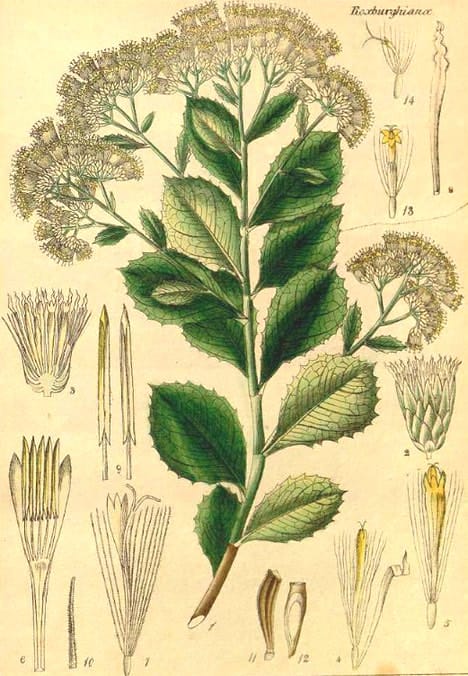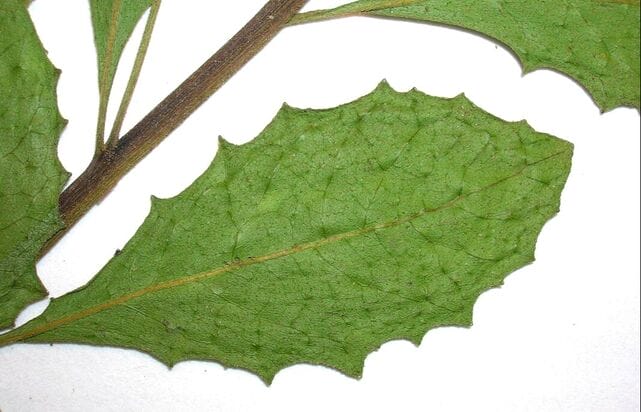Pluchea, Rasana
Rasana, Rasnika, Rasa (Ayurveda)Rasna, Rasan, Zanjbeel-Shaami (Unani)
 Pluchea indica
Pluchea indicaWight, R., Illustrations of Indian botany, or figures illustrative of each of the natural orders of Indian plants (1850)
 Pluchea. indica leaf
Pluchea. indica leaf(Photo by Forest & Kim Starr) (Wikimedia)
Botanical name:
Pluchea lanceolata
Different plants are used for Rasana in different parts of India:
- Pluchea lanceolata is used in Punjab, Uttar Pradesh, Gujarat
- Vanda roxburghii is used in Bengal
- Alpinia galanga in the South of India
Parts used:
Herb; Root
Temperature & Taste:
Mildly Warm, dry.
Uses:
1. Clears Wind-Damp, Eases Pain:
-Arthritis, Rheumatic conditions, Sciatica, Muscular pain (Charaka)
-promotes Urine, clears Gravel and Stones (Unani)
2. Clears Heat:
-Fever
-skin diseases including Eczema and Psoriasis (Sushruta)
3. Kills Worms and Parasites:
-used for Worms (Sushruta)
4. Externally:
-in oils for arthritic pain
-poultice for Hemorrhoids
-swellings, skin diseases, venereal sores
Dose:
Herb in Decoction: 10–30 grams;
Root in Decoction: 3–6 grams
Correctives:
1. Tragacanth, Gum Arabic;
2. Oils such as Almond or Sesame
Substitutes:
1. Vanda roxburghii
2. Alpinia galanga is used as Rasna in Southern India
3. Dodonaea viscosa in Andhra Pradesh.
4. Pluchea has been used as a substitute for Sarsaparilla
Main Combinations:
1. Psoriasis, applied topically with Rauwolfia.
2. Swellings, with Capers root-bark (Charaka)
Major Formulas
Yogaraja Guggulu
Cautions:
It is very drying, so only suitable for Damp conditions
